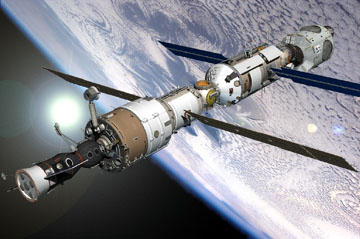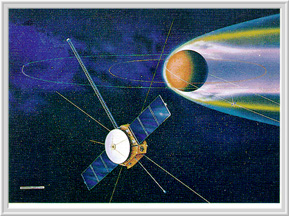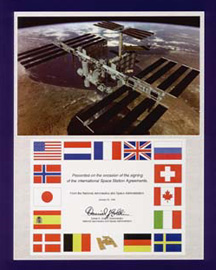ISS Agreement Commemorative presented on the occasion of the signing of the International Space Station Agreements.
Click on image for full size
Image courtesy of NASA
International Space Station Update
News story originally written on June 2, 1998
The building of the
International Space Station (ISS) has been delayed again.
As things stand now, construction has been postponed until November of 1998 (one year later than planned). A Russian rocket would transport the control module named Zarya (Russian word for sunrise) from Kazakstan on November 20. The Space shuttle Endeavour would then follow on December 3 with the second component, a connecting passageway named Unity. The third piece, the Russian service module, is supposed to be completed in time for a spring 1999 launch. No one can live aboard the Station until the service module is in place (because it holds some of the vital life support systems necessary...). NASA is still hoping that a crew will be on board by next summer.
The ISS is expected to be completely built by the winter of 2004.
You might also be interested in:

Will Russia ever put the service module for the International Space Station in space? NASA officials are demanding an answer from the Russian government. The necessary service module is currently waiting
...more
Man has always been compelled to explore and inhabit previously unknown realms. As of this month, man is again inhabiting the daunting expanse we call space. Eight years after the initial agreement to
...more
After a long, slow struggle, the Japanese space program is taking off! Japan's space program started as University researchers launching pencil-sized rockets in the 1950's. They struggled and fought against
...more
It was another exciting and frustrating year for the space science program. It seemed that every step forward led to one backwards. Either way, NASA led the way to a great century of discovery. Unfortunately,
...more
The Space Shuttle Discovery lifted off from Kennedy Space Center at 2:19 p.m. EST, October 29th. The sky was clear and the weather was great as Discovery took 8 1/2 minutes to reach orbit for the Unitied
...more
A moon was discovered orbiting the asteroid, Eugenia. This is only the second time in history that a satellite has been seen circling an asteroid. A special mirror allowed scientists to find the moon
...more
During a period of about two days in early May, 1998, the ACE spacecraft was immersed in plasma associated with a coronal mass ejection (CME). The SWICS instrument on ACE, which determines unambiguously
...more















